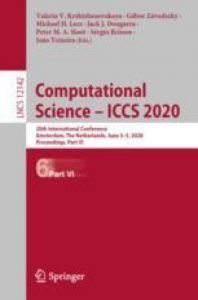 In the conference paper Radial Basis Functions Mesh Morphing presented at the ICCS International Conference on Computational Science 2020, a brief introduction about RBF mesh morphing is given with a special focus on the selection of the radial function. Among the many available options two well adopted ones have been considered in detail: the bi-harmonic spline (BHS) and the Wendland C2 (WC2).
In the conference paper Radial Basis Functions Mesh Morphing presented at the ICCS International Conference on Computational Science 2020, a brief introduction about RBF mesh morphing is given with a special focus on the selection of the radial function. Among the many available options two well adopted ones have been considered in detail: the bi-harmonic spline (BHS) and the Wendland C2 (WC2).
The BHS minimizes the mesh distortion but it is computational intense as a dense linear system has to be solved whilist the WC2 leads to a sparse system easier to solve but which can lack in smoothness. In this paper we compare these two radial kernels with a specific focus on mesh distortion.
A detailed insight about RBF fields resulting from BHS and WC2 is first provided by inspecting the intensity and the distribution of the strain for a very simple shape: a square plate with a central circular hole. An aeronautical example, the ice formation onto the leading edge of a wing, is then exposed adopting an industrial software implementation based on the state of the art of RBF solvers.

Learn the advantages of mesh-morphing.
Click here to download the conference paper.
